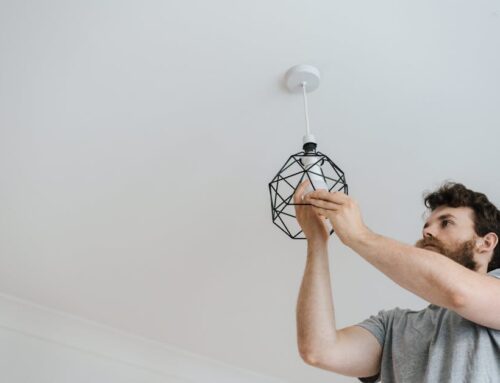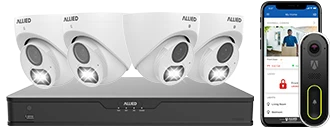Introduction to Alarm Monitoring Services
Alarm monitoring services play a crucial role in maintaining the safety and security of both residential and commercial properties. These services involve the use of advanced technology to keep an eye on various alarm systems, ensuring a swift response in the event of an emergency. Through continuous monitoring, they provide peace of mind to property owners by offering real-time detection and prompt alerts to potential threats.
At its core, alarm monitoring involves a network of systems and protocols designed to detect incidents such as burglaries, fires, and medical emergencies. When an alarm is triggered, the monitoring center receives a signal and acts according to a predefined response plan. This often includes notifying the property owner, and if required, contacting emergency services like the police, fire department, or medical responders.
Alarm monitoring services utilize a variety of technologies to ensure seamless operation. These can include landline phones, internet connections, and cellular networks to transmit signals from the alarm system to the monitoring center. The choice of communication method can significantly impact the reliability and speed of the emergency response.
Central monitoring stations (CMS) are a critical component of alarm monitoring services. These stations are staffed around the clock by trained professionals who can assess alarm signals and take the necessary action. Many CMS facilities are UL-listed, ensuring they meet stringent standards for reliability and performance as set by Underwriters Laboratories.
- Burglar alarms: These systems detect unauthorized entry through the use of sensors on doors and windows. If triggered, they send a signal to the CMS for immediate action.
- Fire alarms: These are designed to detect smoke, heat, or flames, triggering an alert to the CMS, which in turn contacts the fire department.
- Medical alarms: Often utilized by elderly or disabled individuals, these systems provide a means to quickly request medical assistance during an emergency.
Despite the advanced technology and expertise involved, it is important for users to have a basic understanding of their own alarm systems. Regular maintenance and periodic testing ensure that the systems function correctly when needed. Proper installation and usage can prevent false alarms, which are not only inconvenient but can also lead to unnecessary emergency responses and potential fines.
Overall, alarm monitoring services are a vital aspect of modern security measures, offering a layer of protection that goes beyond mere deterrence. By facilitating a prompt and appropriate response to emergencies, these services contribute significantly to the safety and security of property and lives.
Types of Alarm Monitoring Systems
Alarm monitoring systems come in a variety of types, each designed to meet specific security needs and preferences. Understanding the different types of alarm monitoring systems can help in choosing the most appropriate solution for any given situation.
1. Burglar Alarm Monitoring Systems: These systems are designed to detect unauthorized entry into a building or area. Common components include door and window sensors, motion detectors, and glass break sensors. When a breach is detected, the system sends an alert to the monitoring center, which can then notify the property owner and law enforcement authorities as needed.
2. Fire Alarm Monitoring Systems: These systems specifically focus on detecting the presence of fire, smoke, or excessive heat. They often utilize smoke detectors, heat detectors, and pull stations. When activated, the system contacts the monitoring center, which can dispatch the fire department to the location immediately to reduce damage and save lives.
3. Environmental Alarm Monitoring Systems: These systems monitor environmental conditions within a property, such as temperature, humidity, and the presence of water or hazardous gases. They are essential for properties that need to maintain specific environmental conditions, such as data centers or laboratories. Alerts from these systems can prevent significant damage to property and equipment by allowing swift corrective actions.
4. Medical Alarm Monitoring Systems: These systems are critical for individuals who require immediate medical attention due to health conditions. Often referred to as personal emergency response systems (PERS), they typically include wearable devices or buttons that, when pressed, alert the monitoring center to dispatch medical assistance to the individual’s location. These systems provide an added layer of safety for elderly people or those with medical conditions.
5. Video Surveillance Systems: Though not always classified solely as alarm monitoring systems, video surveillance systems play a crucial role in security monitoring. These systems use cameras placed at strategic points around a property to record and stream video footage. In some setups, the surveillance systems are integrated with alarm monitoring services, allowing real-time viewing of an alarm-triggering event and enhancing situational awareness.
6. Panic Alarm Systems: Designed for immediate emergency situations, panic alarms can be triggered manually by users when they feel threatened or are in danger. Typically installed in commercial settings like banks, retail stores, or even residences, these systems ensure that help is dispatched quickly upon activation.
Regardless of the type, alarm monitoring systems share a common goal: to provide rapid notification and response to adverse events, ensuring the safety and security of people, property, and assets. Selecting the right type of system depends on the specific needs and risk profile of the user.
Technologies Used in Alarm Monitoring
Alarm monitoring services utilize a variety of technologies to ensure the timely and reliable detection of intrusions, fires, and other emergencies. These technologies are crucial in providing a rapid response to potential threats and maintaining the safety of properties and individuals.
Traditionally, alarm monitoring systems relied on direct phone lines and analog signals to communicate between the security system and the monitoring center. However, advancements in technology have led to the introduction of more sophisticated and reliable methods of communication:
- Landline Monitoring: This method uses a standard telephone line for communication. While it is reliable, it can be vulnerable to tampering.
- Cellular Monitoring: This technology employs mobile networks to transmit signals. It is considered more secure than landline monitoring as it is less susceptible to physical tampering.
- Broadband Internet Monitoring: Utilizes the internet for communicating alarms. It is faster and can provide additional functionalities such as remote access and control via mobile applications.
- IP Monitoring: This advanced method uses the internet protocol to send alarm signals and offers real-time data transmission, allowing for video verification and enhanced responsiveness.
In addition to communication technologies, alarm monitoring systems integrate various devices to ensure comprehensive protection:
- Control Panels: Act as the central hub for the alarm system, receiving signals from sensors and sending alerts to the monitoring center.
- Sensors: Detect specific conditions such as motion, opening of doors/windows, or the presence of smoke/fire.
- Cameras: Provide visual verification and surveillance capabilities, enhancing security monitoring.
- Glass Break Detectors: Specialized sensors that recognize the sound frequency of breaking glass.
The following table provides an overview of the key technologies and their primary benefits:
| Technology | Primary Benefits |
|---|---|
| Landline Monitoring | Reliable, established technology |
| Cellular Monitoring | Secure, less vulnerable to tampering |
| Broadband Internet Monitoring | Fast, supports remote access |
| IP Monitoring | Real-time data transmission, video verification |
As technology continues to evolve, alarm monitoring services are expected to integrate more advanced features, such as artificial intelligence and machine learning, to enhance their efficiency and effectiveness. These technologies will likely lead to more proactive and predictive monitoring solutions that can address potential threats before they escalate.
Regulations and Standards Governing Alarm Monitoring
Alarm monitoring services are governed by various regulations and standards to ensure effectiveness, reliability, and safety. These regulations and standards are established by different governmental and non-governmental organizations, tailored to address specific aspects of alarm monitoring. Understanding these regulatory frameworks is crucial for service providers and consumers alike.
Regulatory Bodies
Several key regulatory bodies oversee alarm monitoring services. These include:
- Federal Communications Commission (FCC): Regulates communications systems used in alarm monitoring, such as radio frequencies and broadband connections.
- Underwriters Laboratories (UL): Provides safety standards and certifications for alarm system components and monitoring services.
- National Fire Protection Association (NFPA): Develops codes and standards aimed at reducing fire hazards, including those related to fire alarm systems.
- Federal Trade Commission (FTC): Ensures that alarm monitoring service advertising and contracts are fair and not misleading.
Key Standards
There are several key standards that alarm monitoring services must adhere to:
- UL 827: This standard covers the requirements for Central Station Alarm Services. It defines how monitoring centers should operate, including construction, equipment, and personnel standards.
- NFPA 72: Known as the National Fire Alarm and Signaling Code, it sets the standard for installation, performance, and maintenance of fire alarm systems.
- FCC Part 15: Regulates unlicensed broadcast and telecommunications devices that can interfere with alarm monitoring systems.
Compliance and Certification
Alarm monitoring companies must often obtain certifications to prove compliance with standards. Regular inspections and audits are conducted to ensure ongoing adherence to these requirements.
| Regulatory Body | Certification Needed |
|---|---|
| Underwriters Laboratories (UL) | UL 827 Certification |
| National Fire Protection Association (NFPA) | Compliance with NFPA 72 |
Importance of Compliance
Compliance with these regulations and standards is crucial for several reasons:
- Safety and Reliability: Ensuring that alarm systems function correctly and alert the necessary parties during an emergency.
- Insurance Requirements: Many insurance companies require certified systems for coverage or offer discounts for compliant systems.
- Consumer Trust: Certification signals to consumers that the service adheres to industry best practices and standards.
- Legal Protection: Reduces the risk of litigation arising from system failures or malfunctions.
It is essential for both service providers and consumers to stay informed about the regulatory landscape. Compliance not only facilitates operational efficiency but also enhances the overall reliability and effectiveness of alarm monitoring services.
Benefits of Alarm Monitoring Services for Consumers and Businesses
Alarm monitoring services offer several advantages for both consumers and businesses, enhancing security and providing peace of mind through continuous monitoring and rapid response to emergencies.
For Consumers:
- Enhanced Security: With 24/7 monitoring, consumers can rest assured that their homes are being watched over, even when they are not present. Any sign of a breach triggers immediate notification to both the homeowner and the appropriate emergency response team.
- Rapid Response: Alarm monitoring centers can quickly contact law enforcement, fire departments, or medical services in the event of an emergency, potentially minimizing damage and harm.
- Insurance Benefits: Many insurance companies offer discounts on homeowners’ insurance premiums for properties with monitored alarm systems, recognizing the reduced risk of theft and damage.
- Remote Monitoring and Control: Consumers can use mobile applications to monitor and manage their alarm systems remotely, providing further convenience and control over home security.
- Peace of Mind: Knowing that a professional monitoring service is safeguarding their property alleviates stress and worry, especially when away from home for extended periods.
For Businesses:
- Theft and Vandalism Prevention: Alarm monitoring systems deter criminal activities by ensuring immediate action in case of unauthorized access, thus protecting business assets.
- Employee Safety: Alarm monitoring can include personal safety devices for employees working in potentially hazardous environments or late at night, providing them with immediate assistance if needed.
- Regulatory Compliance: Many industries require compliance with strict security regulations. Alarm monitoring helps businesses meet these requirements, avoiding legal penalties and ensuring business continuity.
- Environmental Monitoring: Some alarm systems include environmental sensors to detect hazards such as fires, gas leaks, or flooding, allowing businesses to take prompt action to safeguard both people and property.
- Operational Efficiency: With professionals handling security monitoring, businesses can focus on their core operations without reallocating resources to manage security concerns.
Overall, alarm monitoring services provide significant benefits that justify their adoption, offering reliable protection, swift response in emergencies, and added functionalities that enhance both personal and commercial safety.
Future Trends in Alarm Monitoring Services
The landscape of alarm monitoring services is continually evolving, driven by technological advancements and changing consumer needs. Understanding the future trends in this sector is paramount for both service providers and consumers.
1. Integration with Smart Home Devices
One significant trend is the integration of alarm monitoring systems with smart home devices. The popularity of smart home technology has led to the development of alarm systems that can be managed via a single interface alongside other connected devices, such as smart locks, cameras, and lighting systems. This integration allows for more seamless and efficient management of home security.
2. Increased Use of Artificial Intelligence (AI)
Artificial Intelligence (AI) is playing an increasingly important role in alarm monitoring services. AI algorithms can analyze patterns and detect unusual activities with a higher degree of accuracy. For instance, AI-driven cameras can differentiate between routine movements and potential threats, reducing false alarms. These smart systems can also learn and adapt over time, enhancing their efficiency and reliability.
3. Enhanced Cybersecurity Measures
With the rise in connected devices and the Internet of Things (IoT), the importance of cybersecurity in alarm monitoring has grown. Alarm monitoring providers are focusing on implementing robust cybersecurity measures to protect against hacking and data breaches. This involves ensuring encrypted communication channels and regular security updates.
4. Mobile Accessibility
Mobile technology continues to be a driving force in the alarm monitoring sector. Consumers increasingly demand the ability to monitor and control their alarm systems through mobile applications. These apps offer real-time notifications and allow users to manage their systems remotely, providing an added layer of convenience and responsiveness.
5. Cloud-Based Solutions
Cloud-based alarm monitoring solutions are becoming more prevalent. Moving data and functionalities to the cloud provides greater scalability, flexibility, and accessibility. It allows for more efficient data storage and processing, and facilitates integration with other cloud-based services.
6. Advanced Analytics and Reporting
Future alarm monitoring systems are expected to offer more advanced analytics and reporting features. These capabilities enable detailed insights into security events and system performance. Advanced analytics can help identify trends, predict potential issues, and improve overall system effectiveness.
7. Personalized Customer Experiences
Service providers are increasingly focusing on delivering personalized customer experiences. This involves tailoring alarm monitoring services to meet the specific needs and preferences of individual users. Personalized services may include custom alert settings, user-specific notifications, and tailored security solutions based on user behavior and preferences.
In conclusion, the future of alarm monitoring services is set to be shaped by technological advancements and evolving consumer demands. Integration with smart home devices, AI, enhanced cybersecurity, mobile accessibility, cloud-based solutions, advanced analytics, and personalized customer experiences are key trends that will drive the industry forward.












